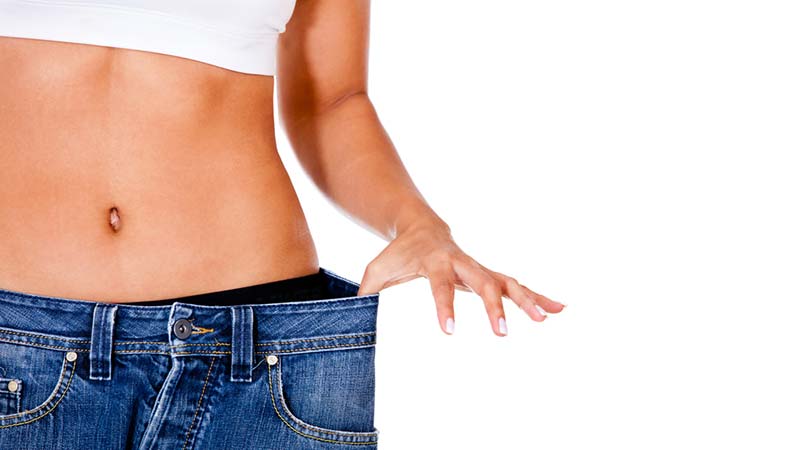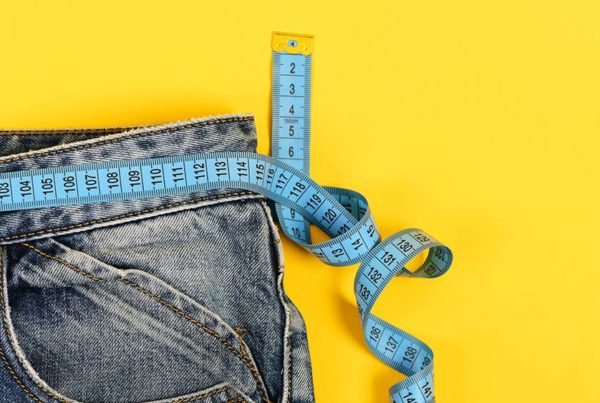
In with fat-burning and out with weight-watching. This latest approach actually works when diets and exercise fail.
In most people’s minds, they are trying to watch their “weight.” All the while, in reality, they become more overfat. They keep their old clothes in hopes they will again fit. Diet books and weight-loss products are on many shelves, but these rarely work long-term, and can be harmful.
The new science of weight loss is less about weight and more about reducing excess body fat.
The problem is this: Many millions of people regularly step on the bathroom scale for an outdated number. This is only the first of many mistaken ideas about weight loss — it’s not about weight. Body weight is composed mostly of water, with muscle also weighing in significantly. Body fat does not weigh much, but takes up a lot of room. So you could tell much more from putting on your jeans in the morning than by stepping on the scale.
This problem of excess body fat is now a worldwide pandemic. During the past half-century the old mantras of low-cal, low-fat only made most of the world’s population bigger. In the U.S. and other western nations, up to 90 percent or more adults are now overfat, a condition of excess body fat that impairs health. Yet, not all are overweight or obese: two outdated terms we should avoid using in most situations.
While body-fat measurements are either inaccurate (most popular tests) or expensive (such as high-tech DEXA scans), the latest research is clear: the waist-to-height ratio is as accurate as high-tech measurements. In short, the waist should be less than half your height. This does not provide one’s percentage of body fat — instead, it’s an accurate diagnosis of being overfat or not.
This ratio also helps individuals monitor their fat-loss program in the most objective, scientific way, with a simple tape measure. And, you can finally trash your bathroom scale (you hate it anyway).
While the old weight-loss approach continues to fail, the new clinical and now scientific results are highly successful. (They’re not really new, just new to a marketplace that still heavily promotes the old.)
Here’s a quick review of the old and new. Visit the links below for more details:
Old: stepping on the scale, day after day, after day
I’m repeating myself here because the act of weighing yourself is addicting, and many people have a hard time not stepping on board each morning. It’s a form of herd mentality, but with nowhere to run. Please stop it!
New: measure your waist
How simple. If it’s half or more of your height, actively pursue ways to burn off body fat (discussed below).
Old: body weight charts and BMI
Twenty to 40 percent of people who are normal weight and non-obese still have excess body fat. While BMI (body mass index) only estimates fat, it’s often inaccurate, sometimes by a lot.
New: overfat
Excess body fat — the overfat condition — impairs cardiovascular and metabolic health, exercise performance, and contributes to most chronic disease and physical impairments. It does this by increasing chronic inflammation and carbohydrate intolerance (insulin resistance). Reducing excess body fat does much more than just get you back into smaller clothes.
Old: calories in, calories out
The traditional notion that we burn calories with exercise (so more and harder must be better) is not accurate. I ask, what kinds of calories do you burn — sugar or fat? Despite burning many calories, burning more sugar and too little fat is another reason even with exercise, many people remain overfat. And, low-cal diets can slow metabolism and reduce fat-burning.
New: fat-burning
In addition to reducing excess body fat, fat-burning can stabilize blood sugar, reduce (often eliminates) hunger, improve brain function, and help balance blood fats like cholesterol and triglycerides, and normalize blood pressure among other factors. It can also help reduce or eliminate medications (work with your health practitioner on this).
Old: exercise, exercise
The current overfat pandemic evolved alongside increasing rates of aerobic and strength exercise. Something must be wrong.
New: food first
Bad food is the primary reason for poor fat-burning and excess body fat, with exercise playing a secondary role.
Old: low-fat
For generations, low-fat foods and diets have been the tradition — and the reason for the failure. By reducing fat in the diet, refined carbohydrates are usually increased, and most low-fat food products have sugar and other carbs added for flavor (lost by reducing the fat), with a lot quickly converting to fat for storage.
New: low-carb
Sugar and other refined carbohydrates immediately affect metabolism, with about half of these foods converting to fat for storage. So even that low-fat carbohydrate meal could add to being overfat — not to mention getting hungrier for more carbohydrates! This is why there’s often a vicious cycle of losing some weight, then gaining it back, plus more.
Old: diets
Impersonal, off-the-shelf, one-size-fits-all diets are unfortunately the old approach and still in vogue. These should be trashed along with the bathroom scale.
New: personalized eating
Humans used to know just how to eat, then companies started telling us what to eat (junk food). To help people get back to their natural eating instincts, I developed the Two-Week Test almost 40-years ago to personalize food choices. (There is also a Two-Week Keto Test.)
Think it takes time to lose weight? That’s also an old idea. You can actually change your metabolism very quickly and start burning off body fat today. Only you can kick out the old number and bring in the new.
Related articles
Study finds 90% of American men overfat
Carbohydrate Intolerance and the Two-Week Test







